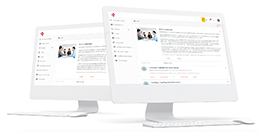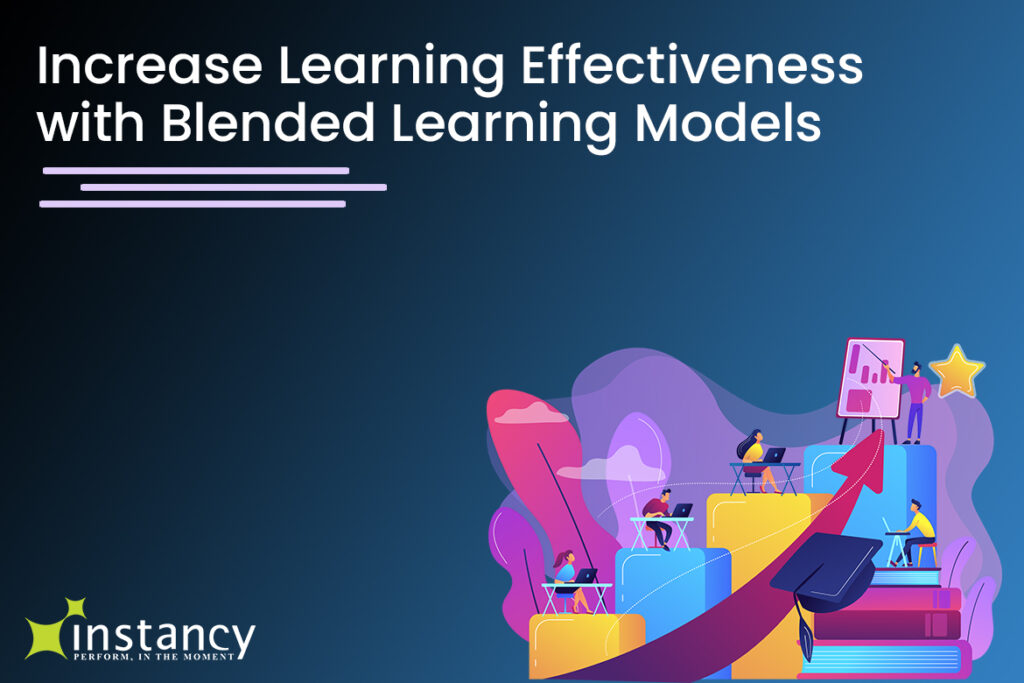Increase Effectiveness of Learning using Blended Learning Models with Virtual Classrooms or Labs, Social Networking Tools, Enabling Students to Participate in Discussions, Share Videos, Post Comments and Ideas.

The original use of the phrase “blended learning” was often associated with simply linking traditional classroom training to elearning activities, such as asynchronous work (typically accessed by learners outside the class at their own time and pace). However, the term has evolved to encompass a much richer set of learning strategies, technologies and choices. Blended learning these days combines structured classroom learning with informal modes of learning that use mobile delivery options, virtual classrooms or labs, social networking tools, enabling students to participate in discussions, share videos, post comments and ideas, and a whole lot more.
Increase Effectiveness of Learning using Blended Learning Models
The benefits of using blended learning programs are two fold: From a learning perspective:
- Stronger learning outcomes: Blended learning provides a more engaging learning experience, and hence a stronger learning outcome for the student.
- More effective learning: Learning occurs over a relatively longer time span, rather than being limited to a learning event. Individuals’ media preferences tend to vary, but combining multiple modes of instructions in a course addresses multiple learning styles. Therefore, retention rates in blended learning programs are higher since the learners have a greater possibility to applying what they’re learning on the job and sharing their experiences with others.
- Higher completion rates: Compared to an all elearning course, blended learning courses show higher completion rates. Students have higher likelihood of finishing a course which encompasses all aspects of a learning experience including content, discussions, assignments and evaluation mechanism and greater sense of accountability.
From a business perspective:
- Higher perceived value: The audience attach a higher perceived value to blended learning courses because of opportunities to interact with experts. This means that they are willing to pay more for such programs.
- Optimized Development Cost and Time: A totally online, self-paced, media-rich, Web-based training content may be too expensive to produce in all instances (requiring multiple resources and skills), but combining virtual collaborative and coaching sessions with simpler self-paced materials can optimize development time as well as effort, and create programs that are just as effective, if not more. New, fresh content can be added over time to keep students up to date with the information. Therefore, blended learning programs provide more economical scalability in distributing the training programs.
- Higher revenue potential through membership revenue: As these blended learning courses are usually of relatively longer duration, there is potential for subscription based revenue model. Membership based on monthly subscription can provide recurring revenue streams for training providers.
- Increased reach/accessibility: Traditional classroom sessions require working professionals to be away from work for 2-3 days or longer at a time, which may not always work from the business perspective. In contrast, think of virtual classroom events such as webinars, which are inclusive of remote audiences. When followed up with recorded knowledge objects (ability to playback a recorded live event) and social collaboration, can extend the reach to those who could not attend at a specific time.
Let’s take the example of a 6 month course on Financial Analysis. Using the blended learning format, the basics can be covered using elearning modules, while regular webinars can provide students opportunities to interact with, and learn from experts. Social networking tools as well as mobile tools can be used to extend reach and encourage collaborative learning. Discussion boards enable students to share ideas, videos, post comments. Assessment modules enable them to test their learning. The revenue model can be based on a membership program with a recurring revenue stream, where members pay subscriptions every month to attend new webinars and gain access to fresh articles or training modules. Thus, the revenue potential is fairly high. It is time to give blended a serious look: to a model of learning which is flexible, which uses formal as well as informal tools of learning, and provides benefits of self paced as well as collaborative learning at lower costs and higher revenue possibilities.





